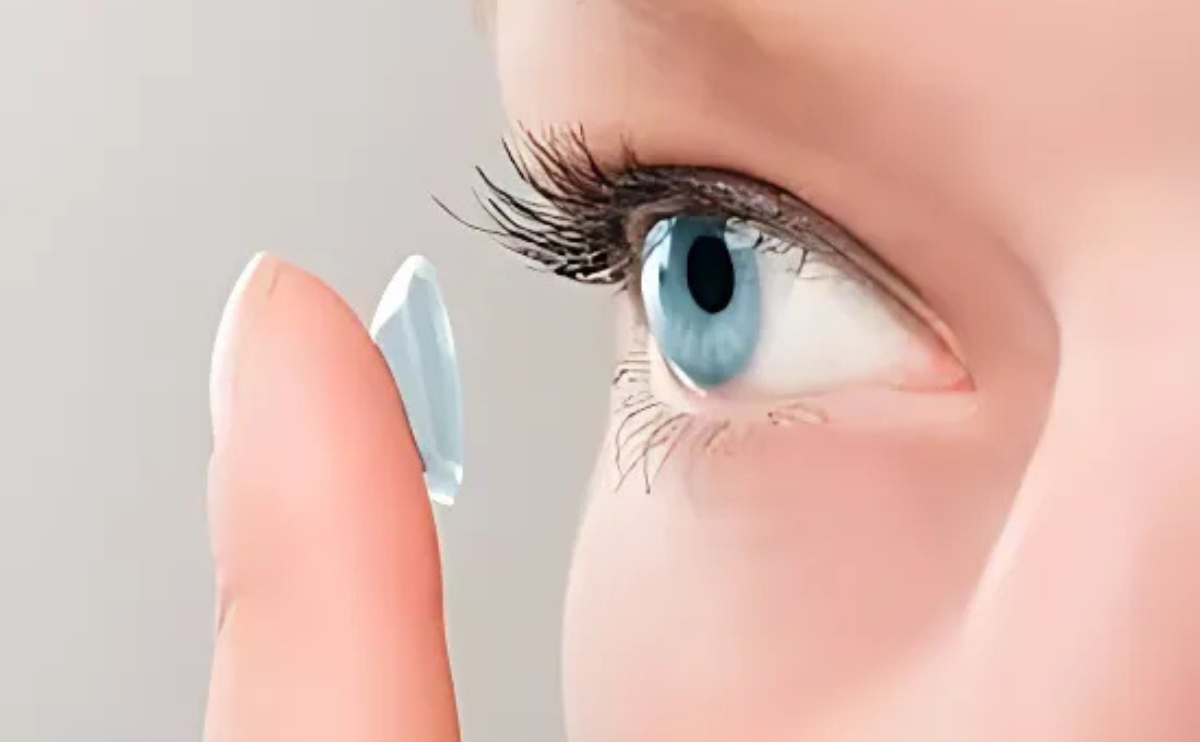Contact lenses are an increasingly popular option for people who need vision correction but don’t want to wear traditional eyeglasses. Whether for everyday wear, sports, or special occasions, contact lenses offer an unobtrusive, comfortable, and effective solution to vision problems. If you’re considering making the switch to contacts, it’s essential to understand what they are, how they work, and the types available.
What Are Contact Lenses?
Contact lenses are small, thin, curved lenses that sit directly on the surface of the eye (the cornea) to correct vision. They work in the same way as glasses by refracting light to improve clarity, but they do so without the need for a frame.
Contact lenses are available in different materials and designs, with various options for people with nearsightedness, farsightedness, astigmatism, and presbyopia. They offer a more natural, unobstructed field of vision than glasses and provide comfort for those who are active or who dislike wearing glasses.
Types of Contact Lenses
There are several types of contact lenses, and choosing the right one depends on your vision correction needs, lifestyle, and preferences. Here are the most common types:
1. Soft Contact Lenses
- Material: Soft lenses are made from a flexible plastic material that allows oxygen to pass through to the cornea, which helps maintain eye health.
- Comfort: Soft lenses are comfortable and easy to adjust to, making them ideal for first-time contact lens wearers.
- Types:
- Daily Wear: These are designed to be worn during the day and removed before sleeping. They are disposable and need to be replaced regularly (typically every 1-2 weeks or monthly).
- Extended Wear: These lenses can be worn for longer periods, including overnight, though they require careful attention and may not be suitable for everyone.
- Toric Lenses: Specifically designed to correct astigmatism, toric lenses are made with a special shape that helps focus light evenly on the retina.
- Colored Contact Lenses: These lenses are available in different colors and can either be purely cosmetic or have prescription strength to correct vision while changing your eye color.
2. Rigid Gas Permeable (RGP) Lenses
- Material: RGP lenses are made from a rigid, oxygen-permeable material that provides sharper vision than soft lenses, especially for those with higher prescriptions.
- Durability: RGP lenses are more durable and less likely to tear than soft lenses.
- Comfort: While they can take longer to get used to, RGP lenses provide clearer, crisper vision, particularly for people with astigmatism or those who have difficulty achieving sharp vision with soft lenses.
3. Hybrid Lenses
- Material: Hybrid lenses combine the best features of soft and rigid lenses. They have a rigid center to provide sharp vision and a soft skirt to ensure comfort.
- Who They’re For: These lenses are great for people with astigmatism or those who have not been satisfied with soft lenses but want more comfort than RGP lenses can provide.
4. Scleral Lenses
- Material: Scleral lenses are large, rigid lenses that cover the entire cornea and part of the white of the eye (the sclera).
- Who They’re For: These are typically used for individuals with irregular corneas, severe dry eyes, or other conditions that prevent traditional lenses from fitting well. They create a tear-filled reservoir between the lens and the eye, which can help with comfort and vision correction.
5. Multifocal Lenses
- Purpose: Multifocal lenses are designed to correct presbyopia, a condition that affects people over the age of 40, where the eyes lose the ability to focus on close objects.
- How They Work: These lenses have multiple prescription powers (for near, intermediate, and far vision), similar to bifocal glasses or progressive lenses. There are two main types:
- Simultaneous Vision: Both near and far vision correction is available across the lens, and the eye adapts to the appropriate focus.
- Segmented Lenses: These lenses have distinct areas for near and far vision, similar to bifocal glasses, but in a contact lens format.
Benefits of Contact Lenses
- Improved Aesthetics: Many people prefer contact lenses because they provide a more natural appearance without the need for glasses. They are particularly appealing for those who want to change their look or don’t want their glasses to distract from their facial features.
- Wider Field of Vision: Unlike glasses, which can have frames that limit peripheral vision, contact lenses sit directly on the eye and provide a full, uninterrupted field of view.
- Better for Sports and Active Lifestyles: Contacts don’t slip off or fog up like glasses can, making them ideal for sports or outdoor activities. They also don’t get in the way of protective gear like helmets or goggles.
- No Fogging or Rain Distortion: One of the biggest advantages of contact lenses is that they won’t fog up during temperature changes or get blurry from rain or snow, which is often a problem for glasses wearers.
- Convenience: Contact lenses offer the flexibility to wear sunglasses without a prescription or to try new styles and looks without worrying about your eyewear.
How to Care for Contact Lenses
Proper care and maintenance are crucial for both comfort and eye health when wearing contact lenses. Here are some tips to keep in mind:
- Clean and Disinfect: Always clean your contact lenses with the appropriate solution to remove dirt, debris, and bacteria.
- Avoid Water: Never wear your contact lenses while swimming or showering, as water can introduce bacteria and cause infections.
- Follow Replacement Schedules: Adhere to the recommended schedule for replacing your lenses (daily, bi-weekly, or monthly), depending on the type of lens you wear.
- Avoid Sleeping in Contacts: Unless your lenses are specifically designed for extended wear, it’s essential to remove them before sleeping to allow your eyes to rest and reduce the risk of infection.
- Regular Eye Check-ups: Schedule regular eye exams to ensure your prescription is up-to-date and that your eyes are healthy.
Who Should Consider Contact Lenses?
Contact lenses may be a good option if:
- You have presbyopia and want to avoid bifocal glasses.
- You play sports or have an active lifestyle and don’t want glasses to interfere.
- You want the freedom and convenience of clear vision without needing eyewear.
- You have an eye condition such as astigmatism that glasses don’t correct as well.
However, contact lenses may not be right for everyone. People with certain conditions, such as dry eyes, allergies, or severe astigmatism, should consult their eye care provider before deciding on contacts.
Conclusion
Contact lenses offer a wide range of benefits, from improved aesthetics to better performance in sports and activities. With options ranging from daily wear to multifocal lenses, there’s a contact lens solution for virtually every vision need. However, proper care and regular eye exams are essential to ensure long-term eye health and comfort. If you’re considering contact lenses, be sure to consult an eye care professional to find the best option for you.










